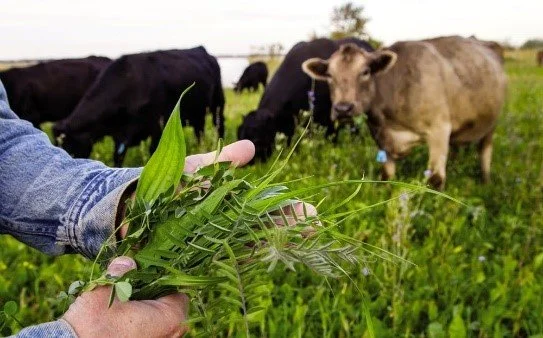How Cover Crops Can Help Your Soil’s Health
As farmers we know that the soil is one of the most important parts of growing a crop. Without good soil, crops struggle throughout the growing season and don’t produce their full potential. There are ways we can help improve our soil so it is a productive environment for our crops to grow in. We need to look to the 5 soil health principles. They are:
1. Soil armour/cover- the residue left on the ground after harvest.
2. Animal integration- using animals to maximize every acre.
3. Diversity- variability within crop blends, crop rotations, and farm wide.
4. Disturbance- biological, chemical, or physical disturbance to the soil.
5. Continual live plant/root- having a live plant in that soil for as long as possible in the growing season.
Here are the ways we can use these principles to improve our soil’s health.
Soil Armour: the residue left on the ground will provide cover and more nutrients from plant breakdown to move down into the soil. This allows for better moisture retention by controlling water erosion. It holds the soil in place along with soil organic matter (OM) and nutrients. The soil cover also decreases evaporation rates so more moisture is available to plants. Covering the ground keeps soil warmer in cold weather which will be good for early seeding, and keep it cooler in hot weather which means for better movement and less evaporation of water and nutrients. Weed growth will be suppressed because of limited sunlight to the weed seedlings. All of these advantages to having soil cover will ensure a protective habitat for soil surface insects and the crops you grow.
Animal Integration: using animals to utilize as many acres as possible is a great way to improve the soil health. Adding another crop under seeded to a cereal (such as Italian rye grass under oats) can provide extended grazing for the cows once the oats are harvested. The under-seeded crop can also be used as a wind erosion preventative. This also adds a living root throughout the growing season and into fall, adding diversity to improve soil health.
Diversity: whether its diversity within crop rotations, or farm wide, adding variability will improve soil health. There are different crops or blends that can be utilized depending on the conditions and time of year. For example, cool season crops will thrive better if planted earlier in the season before soil temperatures are warmer. This spring was cool and wet so cool season plants were able to hit their maximum productivity. The cool season plants could be harvested early and allow for the warm season species to flourish once the heat of the summer hits. If our falls stay consistently warm like this one, the warm season species will keep producing into the fall to allow for extended grazing or a cover crop to prevent blowing soil. To add diversity farm wide means having multiple options for feed sources or marketing options to spread out the risk.
Disturbance: there are 3 types of disturbance: biological (overgrazing), chemical (over application of nutrients or pesticides) and physical (tillage). Disturbance reduction is the aim, so the residue needs to be managed. The strategies to turn residue management into revenue on the farm include fall grazing. Biomass is reduced and fertilizer from the animals are added to the soil. Residue needs to be managed well to avoid hair pinning when seeding, ensuring good seed to soil contact. Reducing disturbance also decreases erosion, runoff, crusting, and OM depletion, leading to a healthier environment for our crops to grow in.
Continual live plant/root: continual live plants feed carbon exudates to the soil food web during the entire growing season. Adding cover crops to annual cash crops will provide live root exudates during the dormant period. Cover crops will also build soil aggregates and pore spaces to improve soil infiltration, catch and release inorganic nutrients and improve water quality, salinity management, and pollinator food and habitat.
Covers and Co. provides blends that encourage soil health improvement. Cover crops introduce new root systems into the soil that will feed carbon exudates to the soil food web. Cover crops are another way to add diversity into your farm, whether that is diversity in the blends or diversity in the crop rotation. Cover crops are a great way to feed your animals and allow them onto land they may not usually be able to graze. Cover crops leave that soil armour on the soil to improve the soil’s health. Cover crops allow us to limit disturbance by using animals to graze off the stubble or thatch layer. This is why DSAG has partnered up with Covers & Co. to provide these cover crop blends to help your soil’s health.
~Annabelle Calcott

